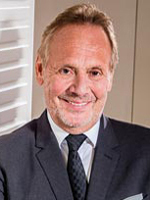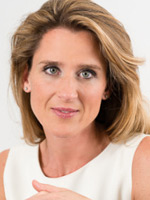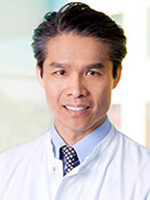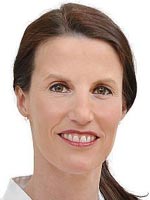All you need to now about Reconstructive Surgery
Specialists of German clinics perform different reconstructive plastic surgeries to restore normal appearance and functionality of body parts. Multidisciplinary approach gives detailed insight into patient’s medical background and allows for efficient treatment.
Reconstructive surgery is corrective surgery that corrects body defects which have appeared in the course of illness, birth or other trauma. Usually it is used to restore body functions, as well as to improve a person’s appearance, especially in the event of an accident or birth injury.
Here are some examples of circumstances in which reconstructive surgery may be required:
- Scar tissue restoration after fires or other injuries
- Correction of cleft palate or harelip
- Breast reduction
- Breast reconstruction after mastectomy
- Reconstruction of knee or elbow joints after sports injuries
- Reconstruction of facial features after trauma
- Reconstruction of excessively large or deformed ears in children
- Reconstruction of fingers or limbs
- Excision of tumors or skin cancer
- Broken bones repair
Reconstructive surgery differs from plastic surgery in that plastic surgery does not correct abnormalities. Reconstructive surgery, even if chosen for aesthetic reasons, is usually used to remove abnormalities. One of the most common areas of the application of reconstructive surgery is professional sports.
Contact sports, football, for instance, can lead to a variety of injuries that can be effectively cured only through reconstructive surgery. To treat injuries of the knee and shoulder joints, as well as broken facial bones reconstructive surgery is required.
Repeated movements in non-contact sports over time also have consequences. Cartilages, natural cushions between the tightly fitting bones in knee, elbow and other joints, can become thin because of overloads. When the bones start rubbing against each other, they wear out as a result, and the painful chronic condition progresses. People who have developed chronic pain of this kind complain of dull pain, even at rest. Often the only way to relieve pain is to take painkillers or to undertake reconstructive surgery. However, damage of this kind can develop not only in athletes.
Methods of reconstructive plastic surgery
Skin grafts
Skin grafts (patches of healthy tissue taken from any other patient’s body area) are used to cover the area of skin that is missed or defected. The new graft takes time to recover: new blood vessels should form, as well as other tissues. Grafts can be full, partial or composite. German clinics widely use extracorporeal perfusion (ECP) to reduce the chance of tissue necrosis: external blood supply promotes graft recovery, and is ceased in 10-14 days. If necessary, bone reconstruction is also performed and is checked with the help of MRI-, CT-scan and bone scintigraphy . This way, German doctors achieve neovascularisation in the soft tissues of all grafts.
Skin flaps
Flap surgery is almost the same as grafts with one difference: blood vessels are also transplanted. Flaps are used to deal with more complicated cases, because consistent blood supply is ensured to the damaged area. Flaps are relocated to the areas where even skin, fat and muscles have been lost. This method is preferable in patients with weak health and low regeneration power.
Together with traditional methods, German clinics use specialized materials: ReCell®, medical needling, Matriderm ®, Strattice TM, Suprathel®. These are particularly useful for treatment of burns and keloid scars.
Tissue expansion
Tissue expansion means that body can generate extra skin, if the surrounding area is stretched. An expander is inserted under the skin near the area to be treated, the skin stretches and grows. This method takes time, but it can be pretty useful.
Otoplasty
The procedure "Otoplasty" is aimed at pinning ears and correcting deformity of the cartilage. The cartilage is opened by making incisions on the back part of ear, and then it is thinned and reshaped. German surgeons leave minor stitches that leave almost no scars: they are removed in 4-6 days after an operation, and 10 days are enough for full recovery. Local anesthesia is administered to adults and teenagers. In case of ear injury and serious defects, the external ear can be resharpened.
Rhinoplasty
The form of nose is typically reshaped by getting through the nostrils. Surgeons make incisions on the vestibule to eliminate scars. Cartilage and bone structures are reshaped the same way. Thanks to innovative techniques used in German clinics, swellings and hematomas are minimal. Recovery takes about two weeks. Alternatively, German surgeons perform „open“ nose corrections for revision.
Joint arthrodesis
German clinics perform thousands of joint arthtrodesis surgeries to restore normal joint functioning in hands, feet and other body parts using advanced joint therapy methods: intraoperative navigation, computer modeling, etc. Damages cartilage is removed and bones are fixed with metal fixators or bone grafts. German clinics widely use two innovative methods:
- Donor material is derived in another body and is processed in special laboratories to match patient’s tissues and accelerate recovery.
- Implantation of base metals helps to close the joint and bones in the zone of knitting.
Implantation
To reach desirable breast size in patients, German doctors place breast reconstruction with implants under chest muscles to save breast function and ensure high aesthetics. Silicon implants of the fifth generation (silicone-gel) are used to guarantee safety and comfort. In German clinics, the operation takes about 90 minutes, and a patient can go home the next day after the procedure. Recovery process takes from one to six months.
German clinics perform all reconstructive plastic surgeries possible. Advanced techniques and devices ensure safety and guarantee to restore normal appearance and functionality of affected body parts. This is the most optimal solution for patients who need a consistent level of medical service for reasonable cost.
Why German clinics?
Rich experience and skills of German doctors combined with multidisciplinary approach.
Advanced devices and techniques are used for precise diagnosis and efficient treatment.
Prices in German clinics are 20-40% lower than in some European and American medical centers.
High-quality anesthesia and materials applied for surgery and post-operative procedures.

















 Loading ...
Loading ...


